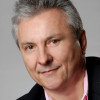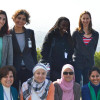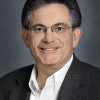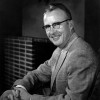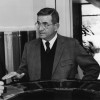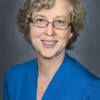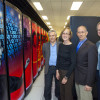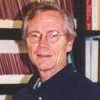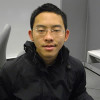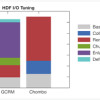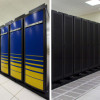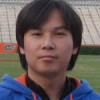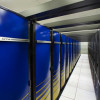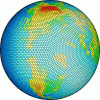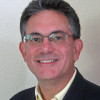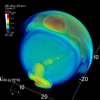NERSC Center News
NERSC@40: How It All Began
In 1974, an almost-obsolete supercomputer once used for defense research was made available to support the fusion energy research community, the first time such a powerful computing resource was used for unclassified scientific computing. Read More »
Al Trivelpiece and the Origins of NERSC
The former Oak Ridge National Laboratory director describes his role in the creation of the Controlled Thermonuclear Research Computer Center, one of NERSC's precursors. Read More »
40 Years of NERSC Firsts
From its humble beginnings in 1974 to today, NERSC has grown and expanded in terms of both supercomputing capabilities and user services. Here are some of the highlights. Read More »
NERSC Celebrates 40 Years at the Forefront
This year, the Department of Energy’s (DOE) National Energy Research Scientific Computing Center (NERSC) is celebrating yet another milestone: its 40th anniversary. Read More »
David Skinner Named NERSC Strategic Partnerships Lead
NERSC created a new position—Strategic Partnerships Lead, to identify new science communities that can benefit from NERSC resources. David Skinner, 15-year NERSC veteran and former head of the facility’s Outreach Software and Programming Group, will fill the role. Read More »
NERSC Kicks Off 40th Anniversary with 2014 Supercomputing Calendar
NERSC is kicking off a year-long celebration of its 40th anniversary with a free, downloadable 2014 calendar that takes a unique look back at the center's supercomputing history. Read More »
NERSC@40 User Group Meeting Feb 3-6
This year's NERSC User Group meeting is the first event of NERSC's 40th anniversary celebrations. It features a two-day "Celebration of Science and Technology", new user training, and a business meeting. Read More »
NERSC Enhances PDSF, Genepool Computing Capabilities
The Linux computing resources that support the Parallel Distributed Systems Facility and Genepool systems at NERSC have been expanded to give users faster access to their data. Read More »
NERSC Kicks Off 40th Anniversary with 2014 Supercomputer Calendar
NERSC is kicking off a year-long celebration of its 40th anniversary with a free, downloadable 2014 calendar that takes a unique look back at the center's supercomputing history. Read More »
NERSC Supports Top Breakthroughs of 2013
Research supported by NERSC is being honored by end-of-year reviews in two leading magazines: Physics World and WIRED. The IceCube South Pole Neutrino Observatory was notably named to both lists, being honored as the most important discovery by Physics World. Read More »
Richard Gerber Named New NERSC User Services Group Lead
Richard Gerber has been named leader of the NERSC User Services Group, effective immediately. He takes over for Katie Antypas, who was appointed head of the NERSC Services Department in September 2013. Read More »
Collaboration Shines in Materials Project Success
Scientific American featured a Computing Sciences-powered project on its December cover as a top world-changing idea of 2013. The Materials Project aims to take the guesswork out of finding the best material for a job—be it a new battery electrode or a lightweight spacecraft body—by making the characteristics of every inorganic compound available to any interested scientist. Berkeley Lab Computing Sciences’ talent and resources combined to help grow this promising project into the world-changing idea it is today. Read More »
New Metadata Organizer and Archive Streamlines JGI Data Management
A new centralized data management system at NERSC is helping researchers at the Joint Genome Institute deal more efficiently and effectively with the vast amounts of data yielded by increasingly complex bioinformatics projects. Read More »
Berkeley Lab Hosts 5 Emerging Leaders During TechWomen 2013
TechWomen 2013 brought 76 women from 16 Middle Eastern and African countries to the U.S. in October for a five-week professional mentoring program. TechWomen is an international exchange designed to empower, connect and support women professionals in science, technology, engineering, and mathematics (STEM). This is the third year the Lab has been represented in the program. Read More »
DOE Awards $25.4 Million in Contracts for Exascale Supercomputer Interconnect Design
The Department of Energy’s Office of Science and the National Nuclear Security Administration have awarded $25.4 million in research and development contracts to five leading companies in high-performance computing to accelerate the development of next-generation supercomputers. Read More »
Global Scratch Gets an Upgrade
The most used file system at the National Energy Research Scientific Computing Center (NERSC)—global scratch—just got an upgrade. As a result, some users may see their data output to global scratch reach up to 80 gigabytes per second. Read More »
NERSC Now Connecting All Science at 100Gbps
All network traffic flowing in-and-out of the Department of Energy’s NERSC is now moving at 100 Gbps—this includes everything from email to massive scientific datasets. Read More »
Martin Karplus Wins Nobel Prize in Chemistry
On Wednesday, the Nobel Prize in Chemistry was awarded to three scientists for pioneering methods in computational chemistry that have brought a deeper understanding of complex chemical structure and reactions in biochemical systems. These methods can precisely calculate how very complex molecules work and even predict the outcomes of very complex chemical reactions. One of the laureates—Martin Karplus of Harvard University—has been using supercomputers at the Department of Energy’s… Read More »
Special Feature: 5 Questions for Sudip Dosanjh
In conjunction with the U.S. Department of Energy’s focus on supercomputing in the month of September, Dosanjh answers five questions about supercomputers, rewards and challenges of running NERSC, and the return on DOE's invesment in supercomputing. Read More »
Special Feature: Supercomputers Map Our Changing Climate
In honor of DOE's supercomputing month, here's a look at how researchers are using NERSC’s state-of-the-art supercomputers to learn about earth’s changing climate. Read More »
Special Feature: Energy - The Spark that Ignited DOE Supercomputing
In honor of the Department of Energy's supercomputing month, here are just a few of the energy research projects computing at NERSC. Read More »
Special Feature: Reducing Energy Costs with Better Batteries
In honor of DOE's supercomputing month, we are highlighting some of the ways researchers are using supercomputers at the National Energy Research Scientific Computing Center (NERSC) are working to build better batteries. Read More »
Katie Antypas Named New Head of NERSC Services Department
Katie Antypas, who has led NERSC’s User Services Group since October 2010, has been named as the new User Services Department Head, effective September 23. Read More »
September is Scientific Supercomputing Month
This month, DOE is celebrating scientific supercomputing. So we are highlighting how research done at Berkeley Lab and NERSC is changing the world. We'll also look back at NERSC’s long history with photos from our archives and some Q&As. Stay tuned! Read More »
Jeff Broughton Named NERSC Division Deputy for Operations
Jeff Broughton has been named as the new NERSC Division Deputy for Operations. The announcement was made Aug. 15 by NERSC Division Director Sudip Dosanjh. Read More »
Peter Nugent and Elizabeth Bautista Honored for Exceptional Achievement
Peter Nugent and Elizabeth Bautista of the NERSC Division been recognized with Lawrence Berkeley National Laboratory's (Berkeley Lab) Director’s Awards of Exceptional Achievement. Read More »
NERSC Strategic Plan Is Now Online
The NERSC Strategic Plan for FY2014–2023 is now online. The plan discusses NERSC’s mission, goals, science drivers, planned initiatives, and technology strategy, among other topics. Read More »
NERSC Intern Wins Award for Computing Achievement
Stephanie Cabanela, a student intern in NERSC's Operation Technologies Group was honored with the Bay Area Affiliate National Center for Women and Information Technology (NCWIT) Aspirations in Computing award. Read More »
NERSC Announces Winners of Inaugural HPC Achievement Awards
NERSC announced the winners of their inaugural High Performance Computing Achievement Awards at the annual NERSC User Group meeting. Read More »
NERSC Staff Participate in Regional Science Bowl
High School students from all corners of the San Francisco Bay Area flocked to the Berkeley Lab on Feb 2 to battle in DOE’s Regional Science Bowl—an academic competition that tests students' knowledge in all areas of science. A number of NERSC staff participated in the event as moderators, scientific judges, timekeepers and scorekeepers. Read More »
Nick Wright Named Advanced Technologies Group Lead
ick Wright has been named head of the National Energy Research Scientific Computing Center’s (NERSC) Advanced Technologies Group (ATG), which focuses on understanding the requirements of current and emerging applications to make choices in hardware design and programming models that best serve the science needs of NERSC users. Read More »
Throwback Thursdays Celebrate Scientific Supercomputing
A Cray-1 supercomputer arrives at the Magnetic Fusion Energy Computer Center in May 1978. The U.S. Department of Energy (DOE) was investing in scientific supercomputing long before the internet became the internet, and back when clouds only came in the white, fluffy variety.As part of the DOE's celebration of scientific supercomputing, we present a sampling of historical photos and factoids shared each of the five Thursdays of this month via social media channels. To see a full resolution… Read More »
John Shalf Is Named Chief Technology Officer for NERSC
John Shalf has been named the Chief Technology Officer of NERSC Division at Berkeley Lab. Shalf will also continue to serve in his current role as head of the Computer and Data Sciences Department in Berkeley Lab’s Computational Research Division. Read More »
Phase 1 of Edison Arrives at NERSC
Phase-1 of NERSC's Edison system, a Cray XC30 (Cascade), arrived on November 27. The system will be available to users in 2013. Read More »
State Department’s TechWomen 2012 Visit NERSC
Thirty women from the United States Department of State’s 2012 TechWomen cultural exchange toured the Department of Energy’s National Energy Research Scientific Computing Center on Thursday, September 27. Read More »
End-to-End Network Tuning Sends Data Screaming from NERSC to NOAA
When it comes to moving large datasets between DOE’s NERSC and his home institution in Boulder, Colo., Gary Bates is no slouch. As an associate scientist in the Earth System Research Lab at NOAA, Bates has transferred hundreds of thousands of files to and from NERSC, as part of a “reforecasting” weather forecasting project. Read More »
“Flying Through the Known Universe” Screens at 3D Film Festival in L.A.
A 3D movie flight through hundreds of thousands of galaxies at considerably faster than the speed of light has its world-premiere screening at the 3D Film Festival in Los Angeles. Read More »
Now Accepting Applications for Alvarez Fellowship
Apply now for the Luis W. Alvarez Postdoctoral Fellowship in Computational Science, sponsored by Lawrence Berkeley National Laboratory’s Computing Sciences Directorate. Researchers in computer science, applied mathematics or any computational science discipline who have received their Ph.D. within the last three years are encouraged to apply. The successful applicant will receive a competitive salary and excellent benefits. Read More »
First NERSC Director John Killeen Dies at 87
John Killeen, the founding director of what is now known as the National Energy Research Scientific Computing Center (NERSC), died August 15, 2012 at age 87. Killeen led the Center from 1974 until 1990, when he retired. The Department of Energy conferred its highest honor, the Distinguished Associate Award, on Killeen in 1980 in recognition of his outstanding contribution to the magnetic fusion energy program. Initially known as the Controlled Thermonuclear Research Computer Center when… Read More »
What Are the Computational Keys to Future Scientific Discoveries?
A new camera at the hard x-ray tomography beamline of Lawrence Berkeley National Laboratory’s (Berkeley Lab’s) Advanced Light Source (ALS) allows scientists to study a variety of structures as a function of time—from bones to rocks, plants, and even metallic alloys—in unprecedented detail. According to ALS Scientist Dula Parkinson, the new camera generates data 50 times faster than the one it replaced, and researchers hope that all of this information may someday lead to more… Read More »
Sudip Dosanjh Named New NERSC Director
Sudip Dosanjh, a leader in extreme-scale computing at Sandia National Laboratories in Albuquerque, has been named director of the National Energy Research Scientific Computing (NERSC) Division at Lawrence Berkeley National Laboratory. Read More »
NERSC Signs Supercomputing Agreement with Cray
The Department of Energy's National Energy Research Scientific Computing Center (NERSC) announced today that Cray will install its next-generation supercomputer computing system. When completed, the new system will deliver a peak performance of more than two-petaflops per second, equivalent to more than two-quadrillion calculations per second. The full system is expected to go into production in 2013. Read More »
After 5 Years, NERSC’s Franklin Retires
This week, the Department of Energy’s National Energy Research Scientific Computing Center (NERSC) retired one of its most scientifically prolific supercomputers to date—a Cray XT4 named Franklin, in honor of the United States’ pioneering scientist Benjamin Franklin. Read More »
NERSC Releases Mobile Apps to Users
In an effort to make NERSC resources more assessable to its users, the facility is rolling out a number of applications that allow researchers to access scientific data on their web browsers, tablets and smart-phone. This month, the facility announced two new applications now available to its users Read More »
NERSC Launches Data-intensive Science Pilot Program
Department of Energy’s (DOE) National Energy Research Scientific Computing Center (NERSC) is launching a new initiative to support DOE-relevant, data-intensive science pilot projects for up to 18 months. “NERSC has long understood the importance of data intensive science and has supported the analysis of data streams from telescopes, detectors, and sequencers in addition to data coming from simulations run at NERSC," said Kathy Yelick, associate laboratory director for Computing Sciences at… Read More »
Breaking Ground on Computational Research and Theory Facility
Energy Secretary Steven Chu, along with Berkeley Lab and UC leaders, broke ground on the Lab’s Computational Research and Theory (CRT) facility, Wednesday, Feb. 1. The CRT will be at the forefront of high-performance supercomputing research and be DOE’s most efficient facility of its kind. Read More »
SciDAC Outreach Center Participates in “Materials for Energy Applications” Workshop
David Skinner of NERSC, who also heads the SciDAC Outreach Center, presented a poster on “Software Opportunities: Industry, ISVs [independent software vendors] and SciDAC" at a Berkeley Lab invitation-only workshop on Materials for Energy Applications. Read More »
Can Cloud Computing Address the Scientific Computing Requirements for DOE Researchers? Well, Yes, No and Maybe
After a two-year study of the feasibility of cloud computing systems for meeting the ever-increasing computational needs of scientists, Department of Energy researchers have issued a report stating that the cloud computing model is useful, but should not replace the centralized supercomputing centers operated by DOE national laboratories. Read More »
Powered by NERSC, a Database of Billions of Genes and Counting!
With computing and storage support from NERSC, the IMG/M data management system, which supports the analysis of microbial communities sequenced by the Department of Energy’s Joint Genome Institute, crossed the boundry of 1 billion genes recorded in the system—more than any other similar system in the world. Read More »
Inspiring Careers in Science Research
In an effort to expose high school students to careers in science research, the Lawrence Berkeley National Laboratory’s (Berkeley Lab) Computing Sciences Diversity Outreach Program partnered with San Francisco’s Lowell High School research program. Read More »
Jack Deslippe Joins NERSC User Services
As the newest material science and chemistry consultant in NERSC's User Services Group, Jack Deslippe will be building and evaluating material science packages, working with users on material science application needs, and providing general user support. Read More »
NERSC’s Steve Lowe: Driven to High Performance Machines
During his combined 29 years at Lawrence Livermore and Lawrence Berkeley national labs, Steve Lowe has worked with some of the most powerful computing machinery anywhere. But come Jan. 3, he’ll trade in his career and home in Tracy for a new lifestyle – retiring and spending a few years exploring North America with his wife in an RV. Read More »
Berkeley Lab and NERSC Reach Out to Women in Computing
Berkeley Lab Computing Sciences staff reached out to women at the Grace Hopper Celebration in Portland, Ore. And, back in California, Katie Antypas, who heads NERSC's User Services Group, gave students from Mills College, historically a college for women, a lesson in parallel computing and a tour of the facility's supercomputers. This group also included a co-ed contingent from Mills College's graduate program. Read More »
Highlights From SC11
In November 2011, thousands of experts in computing and networking flocked to Seattle, Washington, to participate in tutorials, join panel discussions, lead sessions, give live demonstrations and talks, hold roundtable discussions, help build SCinet—the world's fastest science network—present posters and much more! Here are some highlights from this year's SC11 conference. Berkeley Lab's SC11 Booth - Top left and right photos by David Donofrio Prabhat and Yushu present 100G Demo- Bottom… Read More »
Accelerating Advanced Material Development
Kristin Persson is one of the founding scientists behind the Materials Project, a computational tool aimed at taking the guesswork out of new materials discoveries, especially those aimed at energy applications like batteries. (Roy Kaltschmidt, LBNL) New materials are crucial to building a clean energy economy—for everything from batteries to photovoltaics to lighter weight vehicles—but today the development cycle is too slow: around 18 years from conception to commercialization. To speed… Read More »
NERSC Played Key Role in Nobel Laureate’s Discovery
Saul Perlmutter's, winner of the 2011 Nobel Prize in Physics, lead a team believed to have been the first to use supercomputers to analyze and validate observational data in cosmology. This melding of computational science and cosmology sowed the seeds for more projects, establishing Berkeley Lab and NERSC as centers for this new field. Read More »
Kathy Yelick Appointed to National Academies Computer Science and Telecommunications Board
Kathy Yelick Associate Laboratory Director for Computing Sciences Kathy Yelick has been appointed to the Computer Science and Telecommunications Board (CSTB) of the National Academies, which includes the National Academy of Engineering, National Academy of Sciences, and the Institute of Medicine. CSTB is composed of nationally recognized experts from across the information technology fields and complementary fields germane to the Board's interests in IT and society. Board members are appointed… Read More »
Srinivasan Named Head of NERSC’s Computational Systems Group
Jay Srinivasan has been selected as the Computational Systems Group Lead in the NERSC Systems Department. In this role, he will supervise the day-to-day operation of all of NERSC's computer systems. Prior to taking on his new assignment, Srinivasan was the team lead for the PDSF cluster that supports Nuclear Physics and High Energy Physics. Srinivasan has more than 15 years of experience in high performance computing, both as a user and administrator. Since joining NERSC in 2001, he has worked… Read More »
Data Transfer Nodes Yield Results
The ability to reliably move and share data around the globe is essential to scientific collaboration, that’s why three Department of Energy (DOE) Scientific Computing Centers—Argonne and Oak Ridge Leadership Computing Facilities, and the National Energy Research Scientific Computing Center (NERSC)—have teamed up to focus on optimizing wide area network (WAN) transfers. This ongoing effort began several years ago when each site deployed dedicated transfer nodes (DTNs), optimized for… Read More »
Data Tracking Increases Scientific Productivity
New supercomputers and networks are contributing to record levels of scientific productivity. To effectively meet the increasing scientific demand for storage systems and services, NERSC's staff must first understand how data moves within the facility. Now, a new dynamic database created by the NERSC Storage Systems Group has made this process easier than ever. Read More »
Hopper Among World’s Top 10 Fastest Computers
There are only 10 computers in the world with petaflops power—capable of calculating quadrillions of calculations in one second. According to the 37th edition of the Top500 List, the National Energy Research Scientific Computing Center’s (NERSC’s) Cray XE6 “Hopper” system is one of them. All of the systems on the TOP500 List are ranked on how fast they run Linpack, a benchmark application developed to solve a dense system of linear equations. With a Linpack benchmark performance… Read More »
Petaflops Power to NERSC
From left to right: Horst Simon (Berkeley Lab deputy director), Kathy Yelick (NERSC division director), Dan Hitchcock (DOE), Paul Alivisatos (Berkeley Lab director) standing in front of the Hopper supercomputer system recently accepted by NERSC. The National Energy Research Scientific Computing Center (NERSC) recently marked a major milestone, putting its first petascale supercomputer into the hands of its 4,000 scientific users. The flagship Cray XE6 system is called “Hopper” in honor of… Read More »
NERSC Users Showered With Accolades
April brought in a shower of accolades to longtime NERSC users. Read More »
NERSC Cited for Innovative Use of Globus Online
Globus Online was originally developed as a reliable and secure tool for moving data between remote sites, but NERSC staff also found that it could be used to easily move data between computing systems and the center's HPSS data archive. Read More »
Kathy Yelick Co-authors National Research Council Report
Associate Laboratory Director for Computing Sciences at Berkeley Lab and director of the lab’s NERSC Division, Kathy Yelick was a panelist in a March 22 discussion of "The Future of Computer Performance: Game Over or Next Level?” a new report by the National Research Council. Read More »
NERSC Hosts HS Students on Job Shadow Day
Eighteen students from Richmond's Kennedy High School's TechFutures Academy paid a visit to the National Energy Research Scientific Computing Center (NERSC) at the Berkeley Lab's Oakland Science Facility on February 9, 2011. Read More »
Japanese Computing Center Discusses Potential Collaborations
Representatives from Japan’s Tsukuba University’s Center for Computational Sciences (CCS) visited Berkeley Lab on Feb. 24-25 to meet with researchers from NERSC and CRD and to explore areas of potential collaboration. Read More »
X-ray Image Bank Open for Business
Now open for business: A new data bank where scientists from around the world can deposit and share images generated by coherent x-ray light sources. Read More »
'Insights of the Decade' Enabled by NERSC
Three of ten "Insights of the Decade," as named by Science Magazine, were enabled in part by facilities and research in Lawrence Berkeley National Laboratory’s National Energy Research Scientific Computing Center (NERSC). Read More »
Richmond's Kennedy High Visits NERSC
Eighteen students from Richmond's Kennedy High School's TechFutures Academy paid a visit to the National Energy Research Scientific Computing Center (NERSC) at the Berkeley Lab's Oakland Science Facility on February 9, 2011. Read More »
NERSC Users Pruess and Ramesh elected to National Academy of Engineering
Karsten Pruess of Berkeley Lab’s Earth Sciences Division (ESD) and Ramamoorthy Ramesh of the Materials Sciences Division (MSD), both NERSC users, were elected to the National Academy of Engineering. Read More »
NERSC User James Drake Receives 2010 APS Maxwell Prize for Plasma Physics
Long-time NERSC user James Drake has been awarded the 2010 James Clerk Maxwell Prize for Plasma Physics, the highest honor bestowed to plasma physicists by the American Physical Society (APS). Read More »
Bobby Liu Joins NERSC as Postdoctoral Fellow
NERSC Computational Science Postdoctoral Fellow WangYi "Bobby" Liu joins staff. Read More »
NERSC Hosts Contra Costa College Parallel Computing Club
Eleven members of the Contra Costa College Parallel Computing Club paid a visit to NERSC at the Berkeley Lab's Oakland Science Facility on January 14. Read More »
Dirac Testbed Reveals How Applications are Written
Graphics processing units, or GPUs, may have been invented to power video games, but today these massively parallel devices are being pressed into high-performance computing, or HPC. With improving programming toolsets, commercial computer vendors have become more confident in selling GPU-accelerated systems but, in the world of science, GPUs are still almost as experimental as the problems they are expected to solve. Read More »
NERSC's Hopper Breaks Petaflops Barrier
The Department of Energy's NERSC is now home to the fifth most powerful computer in the world and the second most powerful in the United States, according to the latest edition of the TOP500 list. NERSC's newest supercomputer, a 153,408 processor-core Cray XE6 system, posted a top performance of 1.05 petaflops. Read More »
Kathy Yelick named Associate Lab Director for Computing Sciences
Kathy Yelick has been named Associate Lab Director for Computing Sciences. Yelick has been the director of the National Energy Research Scientific Computing Center (NERSC) since 2008, a position she will continue to hold. Read More »
Metagenomics on a Cloud
One goal of the Magellan project is to understand which science applications and user communities are best suited for science cloud computing, in fact some DOE metagenomics researchers have already given public clouds a whirl. Their preliminary findings about the strengths and limitations of commercial cloud computing platforms will be extremely valuable as DOE explores cloud computing for science. Read More »
NERSC and HDF Group Optimize HDF5 Library to Improve I/O Performance
A common complaint among air travelers on short trips is that the time it takes to get in and out of the airplane and airports can be as long as the flight itself. In computer terms, that's a classic input/output (I/O) problem. Supercomputer users sometimes face a similar problem: the computer tears through the calculations with amazing speed, but the time it takes to write the resulting data to disk ends up slowing down the whole job. There are several layers of software that deal with… Read More »
Berkeley Lab Team Receives NASA Public Service Group Achievement Award
Three scientists from the Lawrence Berkeley National Laboratory’s (Berkeley Lab) Computational Cosmology Center (C3) are being honored with a NASA Public Service Group Award for developing the supercomputing infrastructure for the U.S. Planck Team’s data and analysis operations at the Department of Energy's National Energy Research Scientific Computing Center (NERSC). Read More »
Grace Hopper Powers Science on NERSC's New Cray XE6
NERSC's new flagship petascale supercomputer will be named "Hopper" in honor of American computer scientist Grace Hopper. A pioneer in the field of software development and programming languages, Hopper created the first compiler. She was a champion for increasing the usability of computers, understanding that their power and reach would be limited unless they were made to be more user-friendly. Read More »
A New System at NERSC: Carver Goes into Production
A new system is in production at the Department of Energy's National Energy Research Scientific Computing Center (NERSC). Built on IBM iDataPlex technology, the new system is called "Carver" in honor of American scientist and inventor George Washington Carver. Read More »
NERSC and JGI Join Forces to Tackle Genomics HPC
To ensure that there is a robust computational infrastructure for managing, storing and gleaning scientific insights from this ever-growing flood of data, JGI is joining forces with the National Energy Research Scientific Computing Division (NERSC) at the Lawrence Berkeley National Laboratory (Berkeley Lab), which serves more than 3,500 science users annually who are researching problems in a variety of disciplines from combustion to climate. Read More »
Magellan Explores Cloud Computing for DOE's Scientific Mission
Cloud computing is gaining traction in the commercial world, with companies like Amazon, Google, and Yahoo offering pay-to-play cycles to help organizations meet cyclical demands for extra computing power. But can such an approach also meet the computing and data storage demands of the nation's scientific community? Read More »
Hopper (Phase 1) Prepares NERSC for Petascale Computing
After several months of rigorous scientific testing, the Department of Energy's (DOE) National Energy Research Scientific Computing Center (NERSC) has accepted a 5,312-core Cray XT5 machine, called Hopper (Phase 1). Read More »
Historic Sudbury Neutrino Observatory Data, Carried by ESnet, Lives on at NERSC
Tunneled 6,800 feet underground in Canada's Vale Inco Creighton mine, the Sudbury Neutrino Observatory (SNO) was designed to detect neutrinos produced by fusion reactions in the Sun. Although the observatory officially "switched off" in August 2006, a copy of all the data generated for and by the experiment will live on at the National Energy Research Scientific Computing Center (NERSC). Read More »
Hybrid Multicore Consortium Tackles Programming Challenges
While hybrid multicore technologies will be a critical component in future high-end computing systems, most of today's scientific applications will require a significant re-engineering effort to take advantage of the resources provided by these systems. To address this challenge, three U.S. Department of Energy national laboratories, including the Berkeley Lab, and two leading universities have formed the Hybrid Multicore Consortium, or HMC, and held their first meeting at SC09. Read More »
Berkeley Lab Selects IBM Technology to Power Cloud Computing Research
IBM and the Lawrence Berkeley National Laboratory (Berkeley Lab) announced today that an IBM System x iDataPlex server will run the Lab's program to explore how cloud computing can be used to advance scientific discovery. Read More »
NERSC Results Help University of Florida Student Win Metropolis Award
Chao Cao was awarded the 2009 Metropolis Award for outstanding doctoral thesis work in computational physics earlier this year by the American Physical Society. His award-winning thesis, "First-Principles and Multi-Scale Modeling of Nano-Scale Systems," was honored for creatively using a variety of computational tools to reveal physical mechanisms in complex materials, and for developing a computing architecture that allows massively parallel multi-scale simulation of physical systems. Read More »
NERSC Uses Stimulus Funds to Overcome Software Challenges for Scientific Computing
A "multi-core" revolution is occurring in computer chip technology. No longer able to sustain the previous growth period where processor speed was continually increasing, chip manufacturers are instead producing multi-core architectures that pack increasing numbers of cores onto the chip. In the arena of high performance scientific computing, this revolution is forcing programmers to rethink the basic models of algorithm development, as well as parallel programming from both the language and parallel decomposition process. Read More »
Berkeley Lab Researchers Prepare U.S. Climate Community for 100-Gigabit Data Transfers
Climate 100, funded with $201,000 under the American Recovery and Reinvestment Act, will bring together middleware and network researchers to develop the needed tools and techniques for moving unprecedented amounts of data. Read More »
Increase in IO Bandwidth to Enhance Future Understanding of Climate Change
Researchers at Pacific Northwest National Laboratory (PNNL)—in collaboration with the National Energy Research Scientific Computing Center (NERSC) located at the Lawrence Berkeley National Laboratory, Argonne National Laboratory, and Cray—recently achieved an effective aggregate IO bandwidth of 5 Gigabytes/sec for writing output from a global atmospheric model to shared files on DOE's "Franklin," a 39,000-processor Cray XT4 supercomputer located at NERSC. The work is part of a Science Application Partnership funded under DOE's SciDAC program. Read More »
National Energy Research Scientific Computing Center (NERSC) Awards Supercomputer Contract to Cray
The Department of Energy's (DOE) National Energy Research Scientific Computing Center (NERSC) at Lawrence Berkeley National Laboratory announced today that a contract for its next generation supercomputing system will be awarded to Cray Inc. The multi-year supercomputing contract includes delivery of a Cray XT5™ massively parallel processor supercomputer, which will be upgraded to a future-generation Cray supercomputer. When completed, the new system will deliver a peak performance of more than one petaflops, equivalent to more than one quadrillion calculations per second. Read More »
Jeff Broughton Brings 30 Years of HPC Experience to NERSC as New Head of Systems Department
Jeffrey M. Broughton, who has 30 years of HPC and management experience, has accepted the position of Systems Department Head at the Department of Energy's (DOE) National Energy Research Scientific Computing Center (NERSC). Broughton, who most recently served as senior director of engineering at QLogic Corp., joins NERSC on Monday, August 3. Read More »
NERSC Hosts Workshop About the Dawn of Exascale Storage
This month, the Department of Energy's (DOE) National Energy Research Scientific Computing Center (NERSC) hosted the first workshop that discussed strategies for managing and storing the influx of new archival data that will be produced in the exascale era, when supercomputers will be capable of achieving quintillions (1,000 quadrillion) of calculations per second. Experts predict that DOE's first exascale supercomputer for scientific research will be deployed in 2018. Read More »
NERSC's Franklin Supercomputer Upgraded to Double Its Scientific Capability
The Department of Energy's (DOE) National Energy Research Scientific Computing (NERSC) Center has officially accepted a series of upgrades to its Cray XT4 supercomputer, providing the facility's 3,000 users with twice as many processor cores and an expanded file system for scientific research. NERSC's Cray supercomputer is named Franklin in honor of Benjamin Franklin, the United States' pioneering scientist. Read More »
NERSC Builds Gateways for Science Sharing
Programmers at the Department of Energy's National Energy Scientific Research Computing Center (NERSC) are working with science users to design custom web browser interfaces and analytics tools, a service called “science gateways,” which will make it easier for them to share their data with a larger community of researchers. Read More »
NERSC Delivers 59.9 Petabytes of Storage with Cutting-Edge Technology
NERSC's High Performance Storage System (HPSS) can now hold 59.9 petabytes of scientific data — equivalent to all the music, videos or photos that could be stored on approximately 523,414 iPod classics filled to capacity. This 37-petabyte increase in HPSS storage was made possible by deploying cutting-edge technologies Read More »
VisIt Supported on Cray Systems
Scientists computing on NERSC's Cray XT4 system, called Franklin, can have it all. Now that VisIt, one of the most popular frameworks for scientific visualization, is available on Franklin, users can run their simulations on the machine and visualize the output there too. Read More »
Speeding Up Science Data Transfers Between Department of Energy Facilities
As scientists conduct cutting-edge research with ever more sophisticated techniques, instruments, and supercomputers, the data sets that they must move, analyze, and manage are increasing in size to unprecedented levels. The ability to move and share data is essential to scientific collaboration, and in support of this activity network and systems engineers from the Department of Energy's (DOE) Energy Sciences Network (ESnet), National Energy Research Scientific Computing Center (NERSC) and Oak Ridge Leadership Computing Facility (OLCF) are teaming up to optimize wide-area network (WAN) data transfers. Read More »









